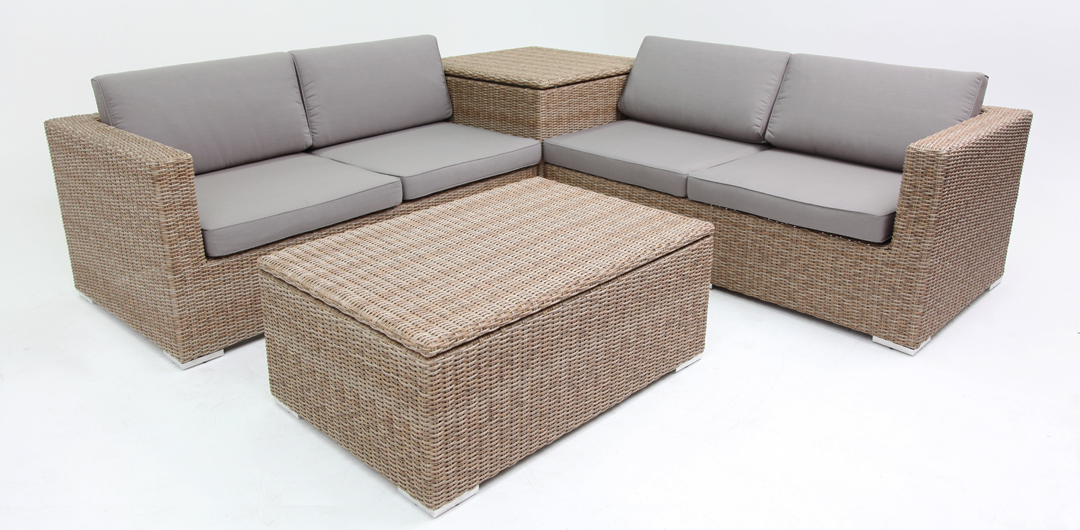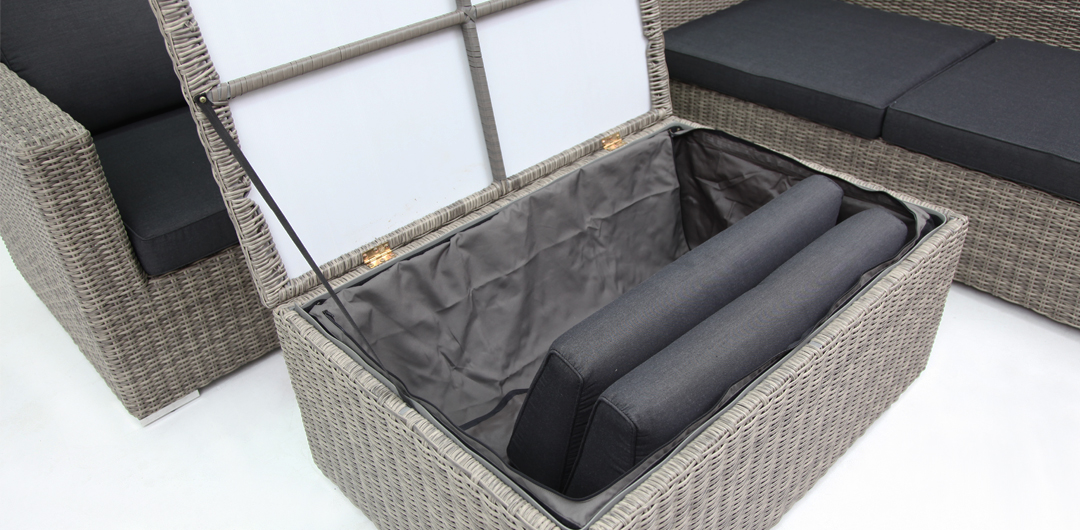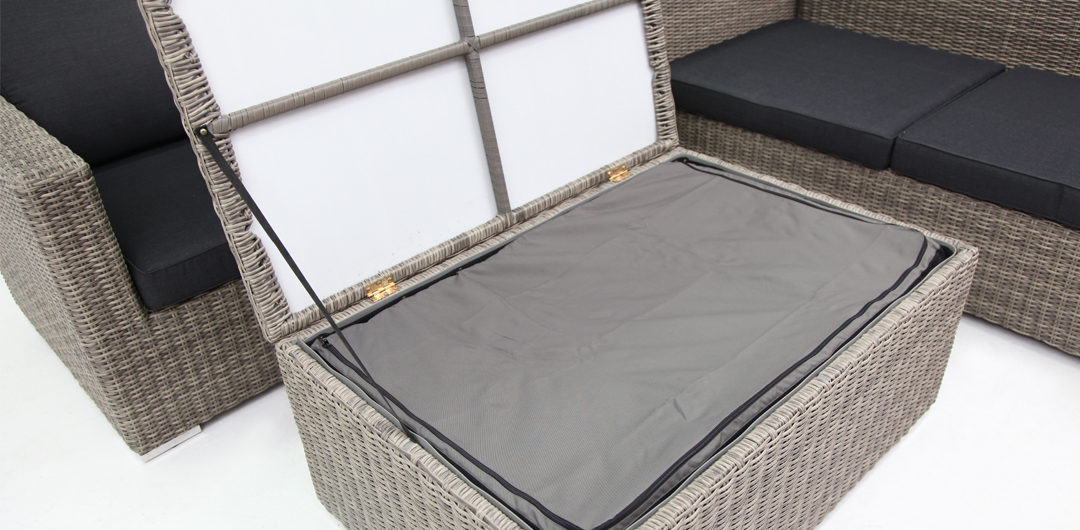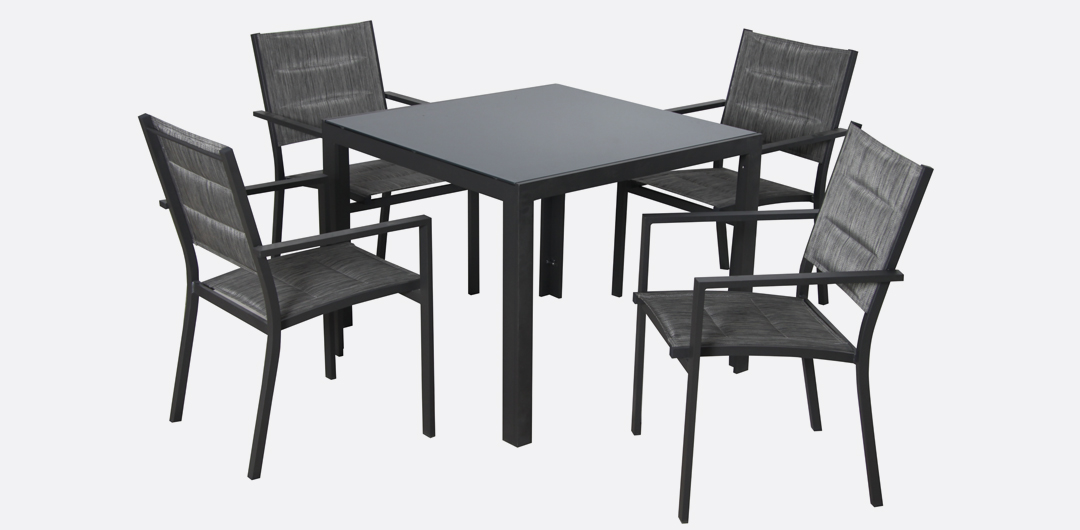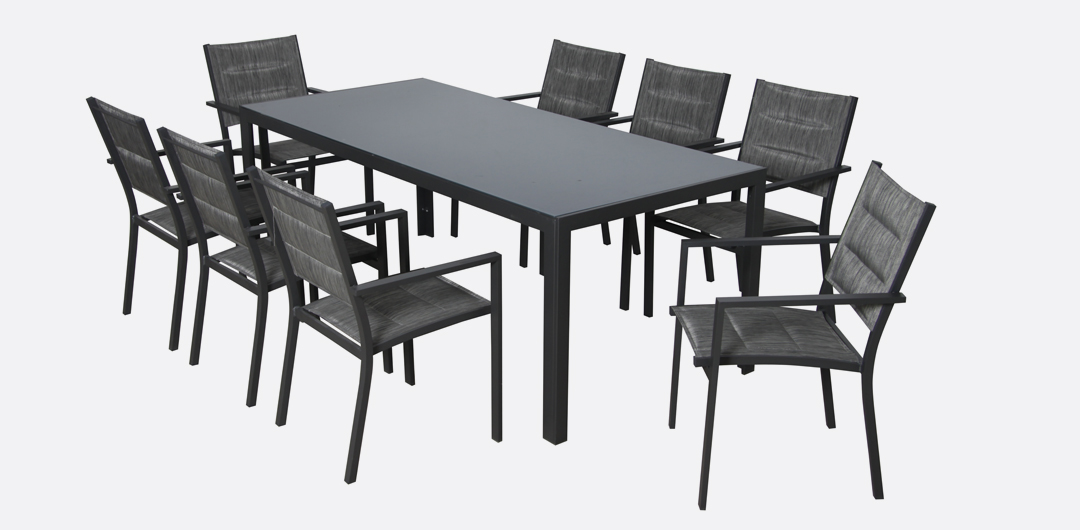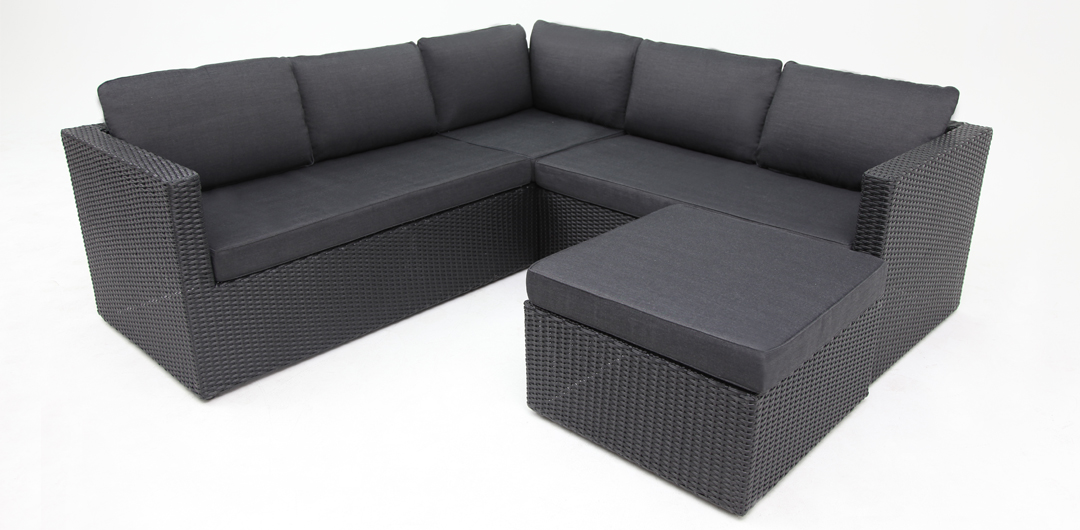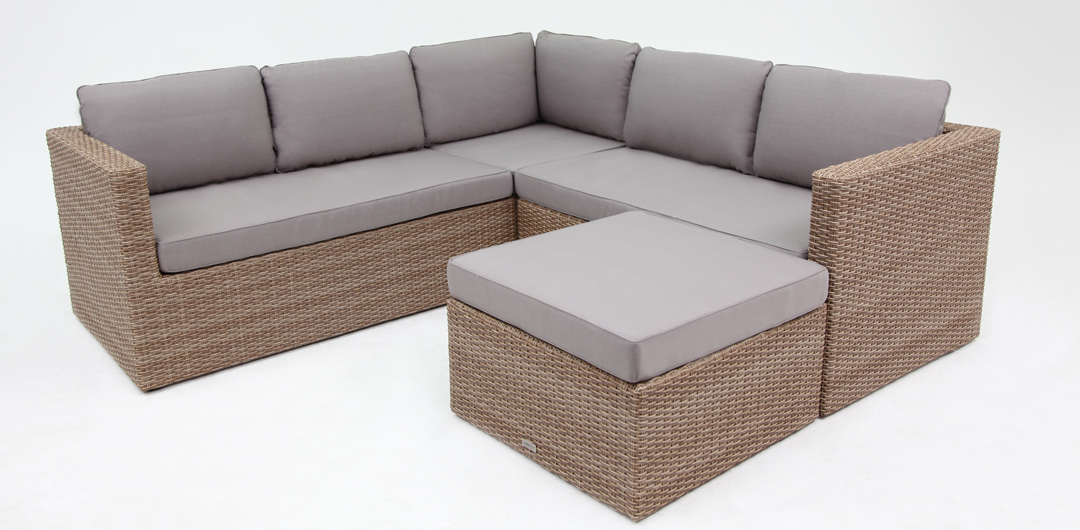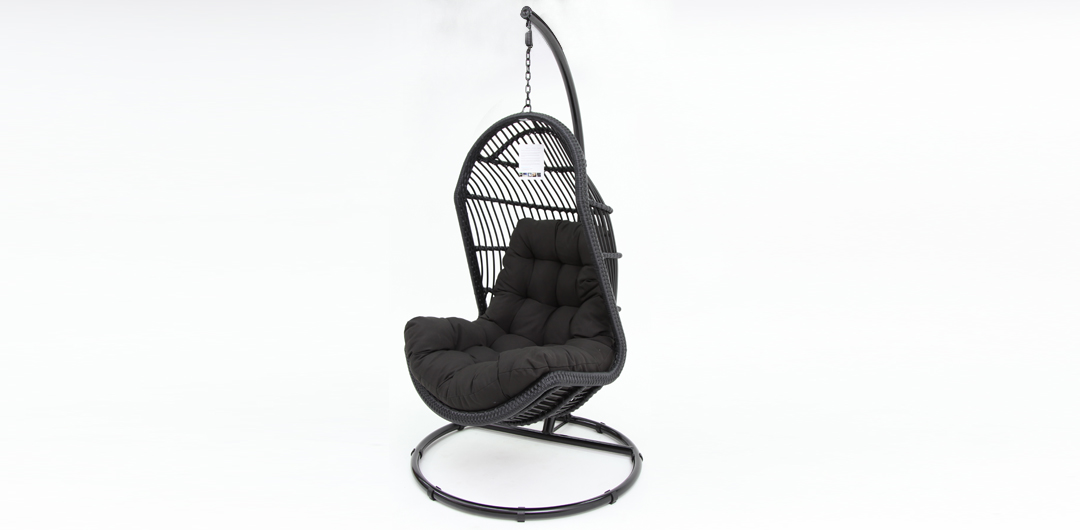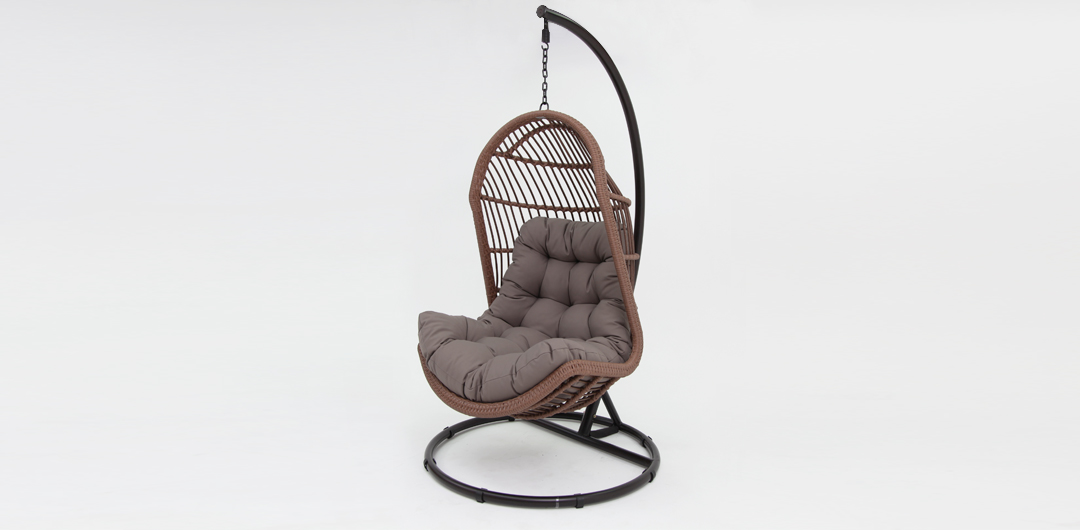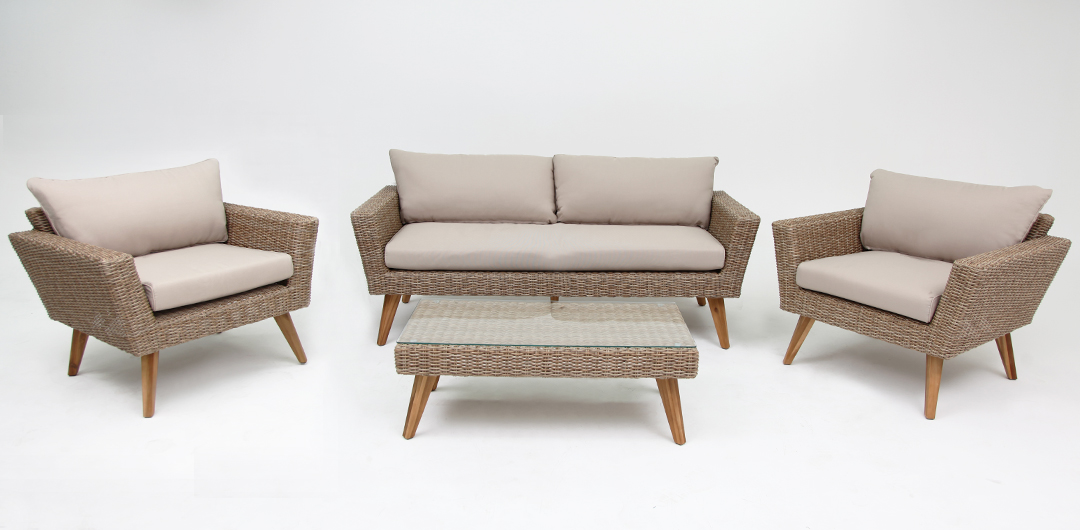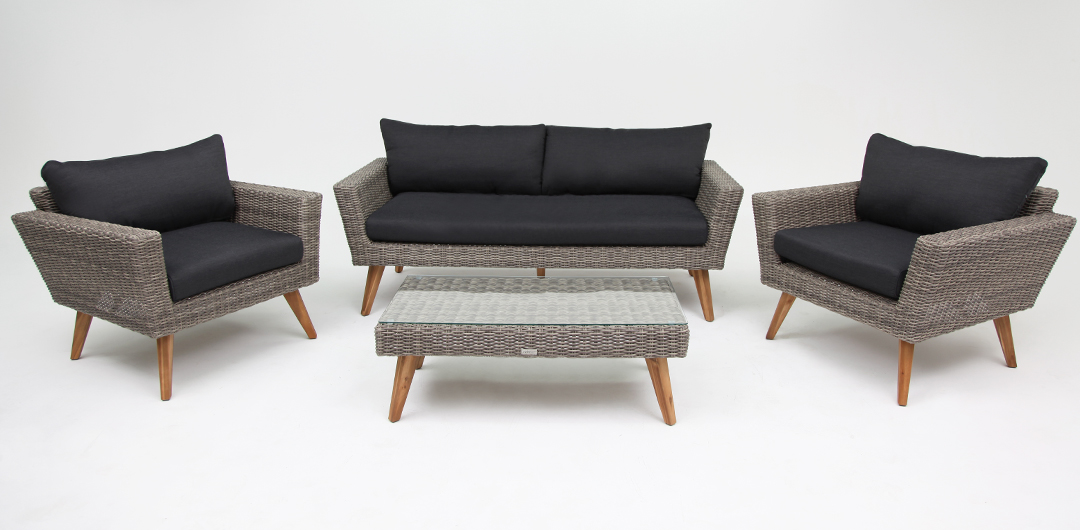Choosing outdoor furniture to suit your space – When it comes to outdoor furniture the opportunities are endless. With plenty of styles, shapes and colours available in the market there’s sure to be something out there to suit every personality, style and space. The process of choosing outdoor furniture doesn’t have to be daunting though. If you take the time to research and evaluate your options you will ultimately decide upon furniture that reflects your personality and style as well as look great in your outdoor space.
Consider your space
The first point to consider when choosing outdoor furniture is to work out how much space you have to play with. Have a walk around and access your outdoor area. As you walk around and design your space consider any existing structures such as pools, plants, garden beds, decking, fences or sheds. These structures will determine how and where your furniture will sit.
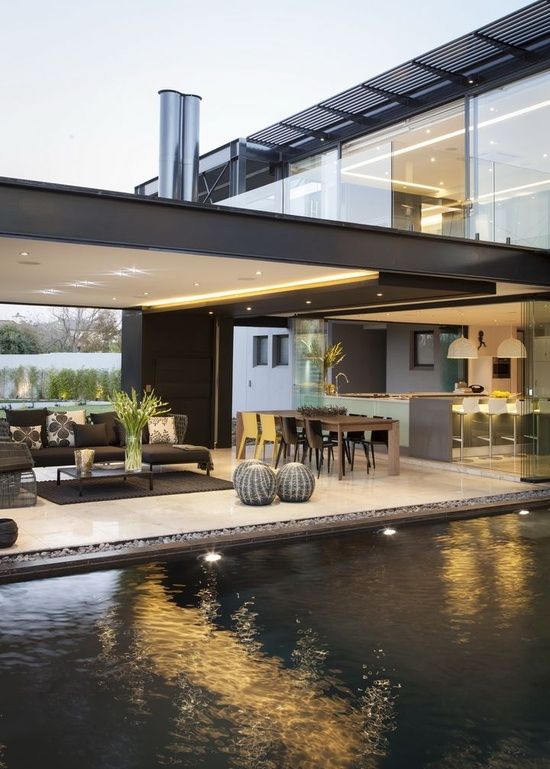 Image via Pinterest
Image via Pinterest
Furniture that folds or stacks tend to work quite well in smaller spaces. These space saving options are ideal for apartments and town houses where space may be limited. In comparison, furniture with rounded edges and numerous parts such as modular lounges or dining sets are better suited to larger areas.
Choosing colours
Selecting furniture colours ultimately comes down to personal taste, however it’s also important to consider the colours already existent in your outdoor area. Consider your paver colours, plants, existing furniture and house materials such as bricks/stone/decking as all of these will play a part in determining what type of furniture colours will work best. Outdoor Living Direct offers lounges, dining sets, balcony sets and hanging chairs in a variety of colours. By doing this we’re providing the customer with options to work with and consider. Another idea when choosing colours is to consider the colour palette inside your home. A nice idea could be to continue this palette outside, creating a consistent flow on effect.
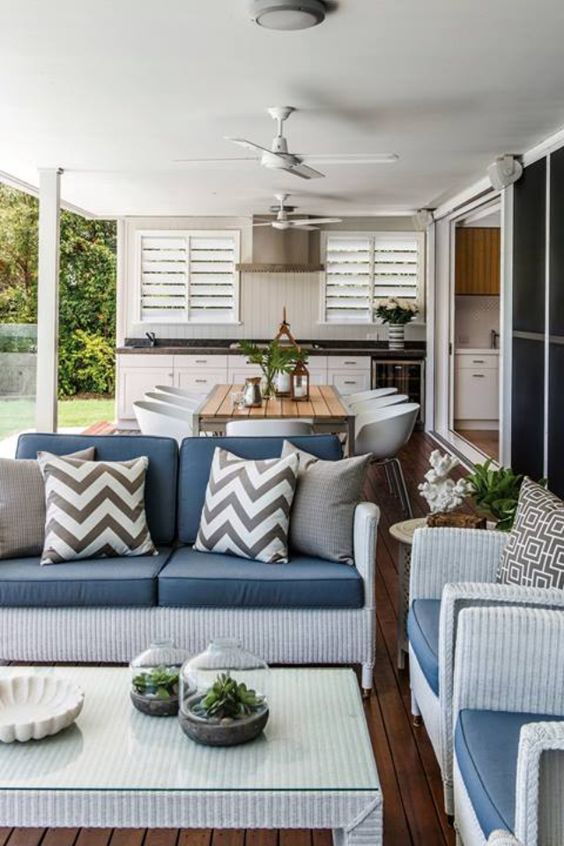 Image via Pinterest
Image via Pinterest
Materials options
Like colours, material choice is ultimately a personal one. There are a number of materials available when it comes to outdoor furniture. All have their advantages and disadvantages however the final decision should be based on what you like, what you can afford and what you think will work best within your space.
Rattan/wicker is a common material used in the manufacturing of outdoor furniture. Available in a range of colours, rattan/wicker will provide your outdoor area with a more traditional look and feel. Sometimes customers get confused by the difference between wicker and rattan outdoor furniture. In broad terms they describe much the same thing. More specifically, wicker refers to the woven construction method by which these items are made, while rattan refers to the material used for weaving. Rattan originally referred to a natural fibre harvested from a family of palms in Southeast Asia. These days we use a more modern, lightweight, synthetic material called polyethylene rattan. This material is more resistant to both ultraviolet light and water, and avoids contributing to the over-exploitation of the world’s natural rattan resources. To add to the confusion between the two phrases, synthetic rattan is also sometimes referred to as resin wicker.
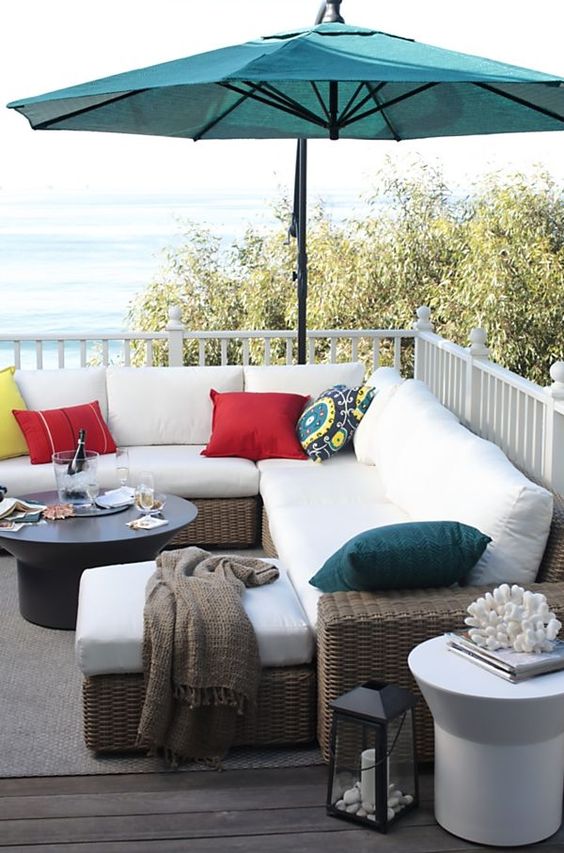 Image via Pinterest
Image via Pinterest
Timber is another commonly used material used in the production of outdoor furniture. Timber ages gracefully, maintaining both structural integrity (it is very resistant to rot and warping) and appearance, requiring only periodical cleaning and oiling in order to maintain its attractive surface colour and grain. If untreated, timber will weather to a silvery grey, which many people prefer if they are aiming to achieve a rustic or seaside look to their outdoor area. If on the other hand you wish to retain the rich, dark character of your timber you will need to clean and oil it periodically. Here at Outdoor Living Direct we have a wide range of timber products. Check them out here today.
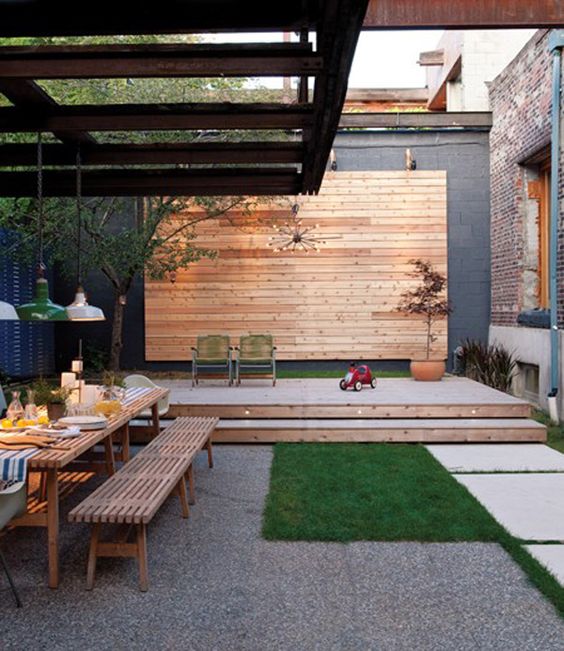 Image via Pinterest
Image via Pinterest
Aluminium is a sturdy material commonly used in the manufacturing of outdoor funriture thanks to its durability, rust resistance and lightweight characteristics. Aluminium furniture is also sleek and modern which may be the look you prefer. Steel on the other hand, is less expensive than aluminium, however it’s prone to rusting and will require additional care to maintain its appearance.
When it comes to outdoor cushions polyester/cotton is most commonly used. Outdoor Living Direct’s outdoor cushions are a polyester/cotton blend that have been UV and weather treated. These cushions can take a light soaking, but if they are constantly wet and out of the sun, mould will develop, as it does on any surface that is kept damp and out of sunlight. This mould can be removed with mould remover, however it will return unless the fabric is kept in a dry environment. We always recommend when the cushions are not being used to store them inside or in a dry area to prolong the life of the fabric and to avoid them going mouldy and/or dirty.
There is also another common outdoor fabric on the market known as Sunbrella. In comparison to polyester, Sunbrella is considered expensive however it is a specialty fabric built especially for outdoor conditions and is widely regarded as the leading outdoor fabric worldwide. Similar to polyester, Sunbrella is also UV treated as well as being fade, mould, mildew, water and stain resistant.
Environment considerations
The environment in which you live should also determine what type of furniture to choose. If you live in an area prone to strong winds avoid lightweight furniture that could potentially blow away. It’s also important to consider the amount of sun and shade your area will receive.
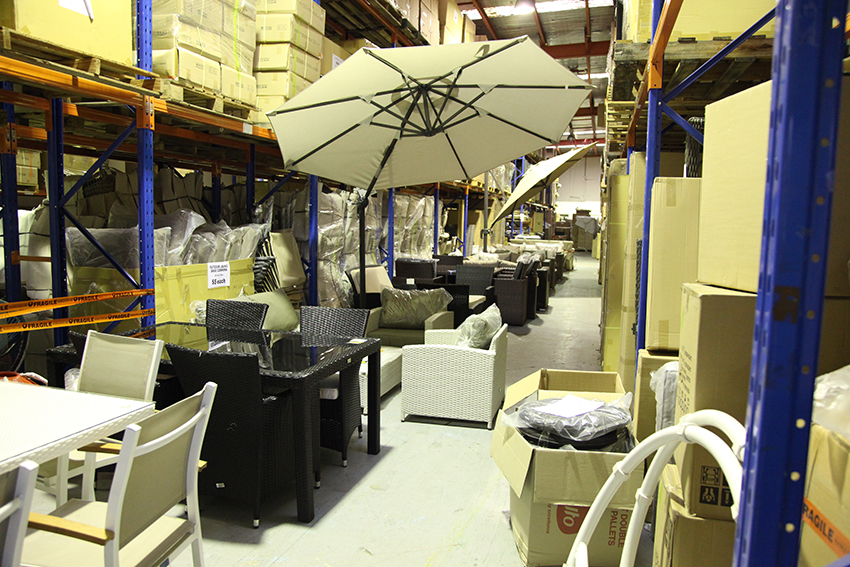



 Image via Pinterest
Image via Pinterest Image via Pinterest
Image via Pinterest Image via Pinterest
Image via Pinterest Image via Pinterest
Image via Pinterest